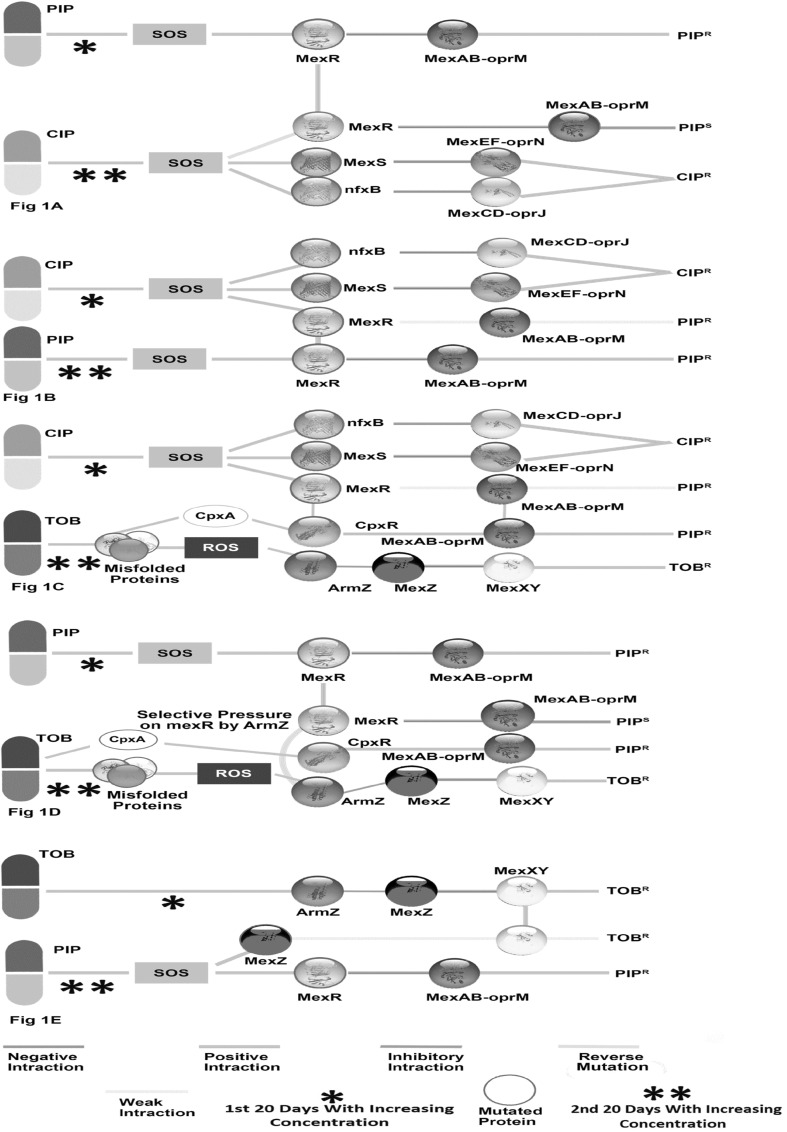Fig. 1.
Schematic representation of regulation of mexAB-oprM, mexCD-oprJ, mexEF-oprN, mexXY-oprM efflux pump. amexR which is mutated in adaptation to PIP expressing mex-AB-oprM is turned back to normal repressing mexAB-oprM efflux pump by reverse mutation during subsequent adaptation to CIP; b normal expression of mexCD-oprM, mexEF-oprN efflux pump is turned on by mutation in nfxB and mexS respectively and also weak expression of mexAB-oprM by mutation in mexR in CIP adaptation which is became partially resensitive by selection on specific changed base position in subsequent PIP adaptation. In subsequent adaptation also tunes to express mexAB-oprM by mutation in mexR; c CIP adaptation in first treatment effect in the same way as earlier Fg1B, but mexAB-oprM is activated by CpxR which is got kinase activity by CpxA in responses of misfolded proteins in subsequent adaptation to TOB. mexXY-oprM is also activated by an antirepressor, ArmZ of repressor mexZ; d PIP adaptation activates mexAB-oprM by mutation in mexR. During subsequent TOB adaptation, mexAB–oprmM continues to do so by CpxR which is activated by mutation in phosphatase region of CpxA, because no mutation in any efflux pump regulatory genes is thought to be operated by selection of AmrZ on mexR; e mexXY-oprM efflux pump which is activated in TOB adaptation by activation of AmrZ is also partially opened by mutation in mexZ in absence of ArmZ in subsequent adaptation to PIP

